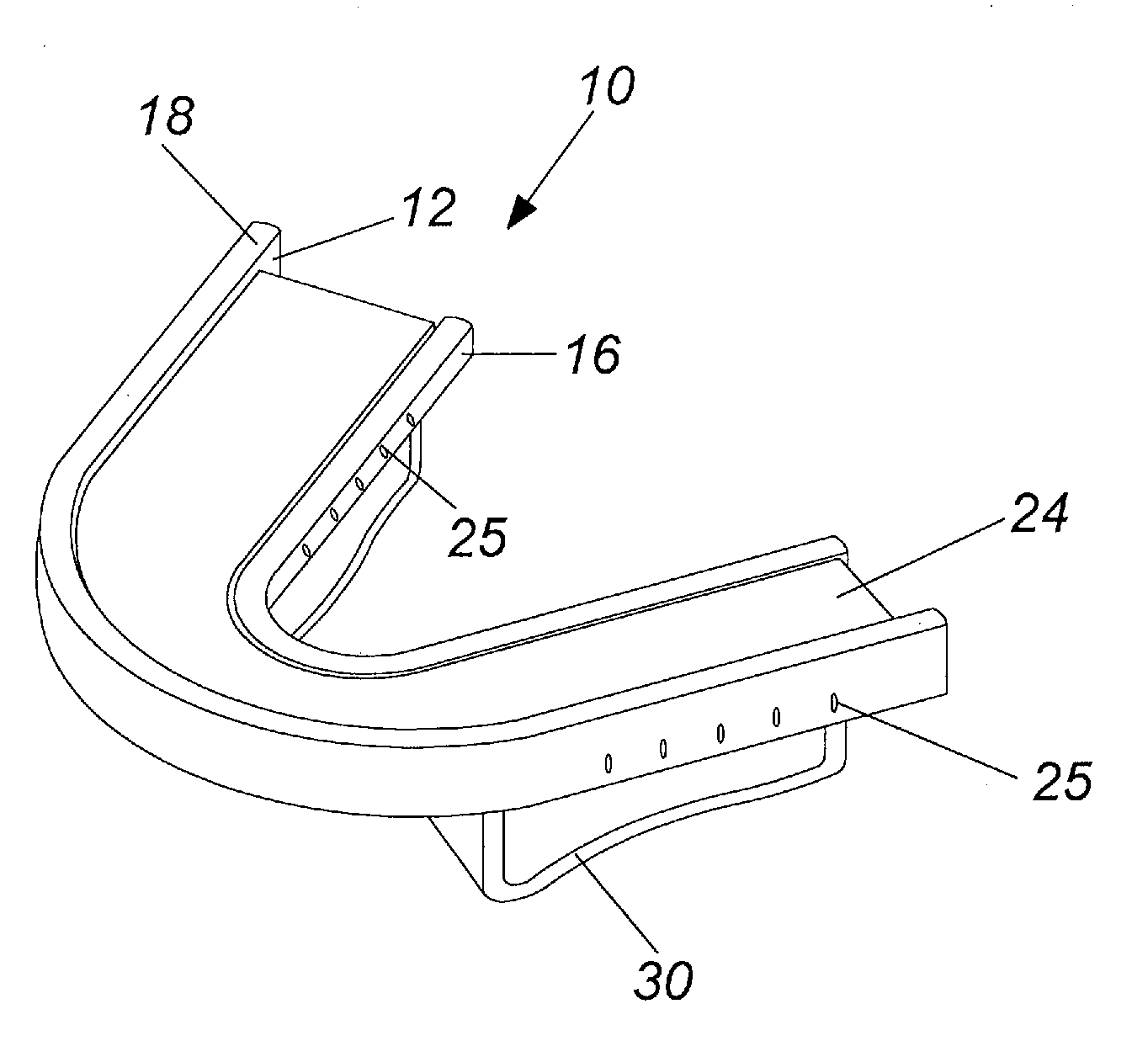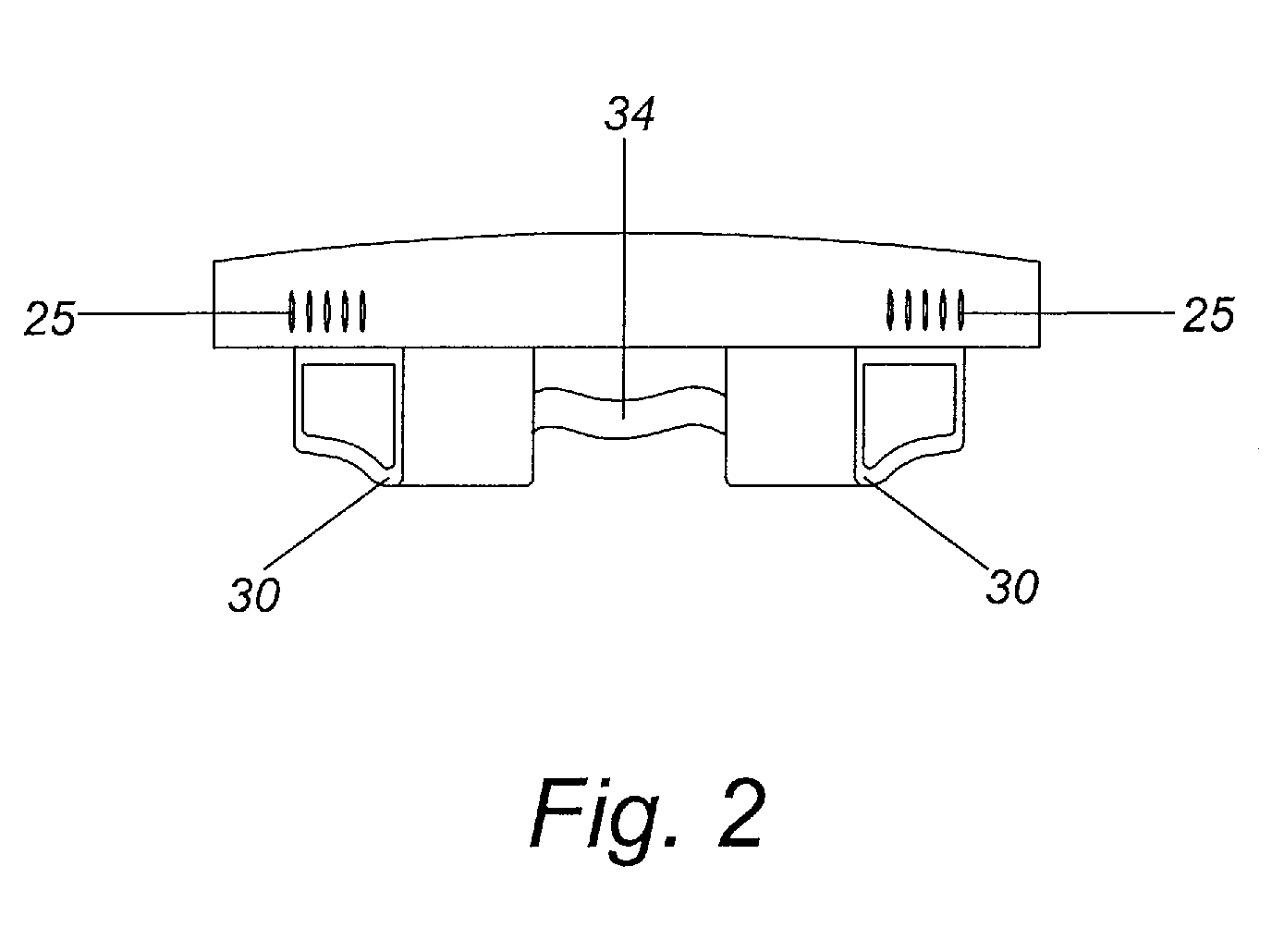Bite guard and method of use
a technology of bite guards and catheters, applied in the field of bite guards, can solve the problems of individual jaw muscles contracting, tongue and/or teeth injury, etc., and achieve the effects of simple design, efficient and effective securement of catheters, and quick and easy adjustment of depth
- Summary
- Abstract
- Description
- Claims
- Application Information
AI Technical Summary
Benefits of technology
Problems solved by technology
Method used
Image
Examples
Embodiment Construction
[0030]While the present invention is susceptible of embodiment in various forms, there is shown in the drawings and will hereinafter be described a presently preferred, albeit not limiting, embodiment with the understanding that the present disclosure is to be considered an exemplification of the present invention and is not intended to limit the invention to the specific embodiments illustrated.
[0031]FIGS. 1-6, which are now referenced, illustrate the present invention and the manner in which it is used. The bite guard 10 of the present invention includes a channel 12. The channel is generally U-shaped so as to conform generally to the dental arc of an individual's teeth (not shown). The channel 12 includes a lower bottom 14 and two substantially side walls 16, 18 that extend at least partially along the inner and outer sides, respectively, of the bottom 14. In a preferred embodiment, the channel 12 includes a lower bottom 14 and two substantially side walls 16, 18 that extend comp...
PUM
 Login to View More
Login to View More Abstract
Description
Claims
Application Information
 Login to View More
Login to View More - R&D
- Intellectual Property
- Life Sciences
- Materials
- Tech Scout
- Unparalleled Data Quality
- Higher Quality Content
- 60% Fewer Hallucinations
Browse by: Latest US Patents, China's latest patents, Technical Efficacy Thesaurus, Application Domain, Technology Topic, Popular Technical Reports.
© 2025 PatSnap. All rights reserved.Legal|Privacy policy|Modern Slavery Act Transparency Statement|Sitemap|About US| Contact US: help@patsnap.com



